
JOURNAL OF EXPERIMENTAL AND THEORETICAL PHYSICS
Scope & Guideline
Unveiling the Mysteries of the Physical Universe
Introduction
Aims and Scopes
- Correlated Electron Systems:
The journal frequently publishes research on correlated electron systems, including studies on high-temperature superconductors, Mott insulators, and various magnetic phenomena. This area emphasizes the complex interactions between electrons and their role in determining material properties. - Quantum Mechanics and Quantum Information:
Research related to quantum mechanics, including quantum computing, quantum optics, and quantum entanglement, is a significant focus. The journal features studies that explore theoretical frameworks and experimental techniques that push the boundaries of quantum information science. - Magnetic and Spin Phenomena:
The journal includes extensive research on magnetic materials and spintronics, examining topics such as magneto-optical effects, spin dynamics, and magnetic phase transitions. This area highlights the interplay between magnetic properties and electronic structures. - Nano and Mesoscopic Physics:
Papers addressing phenomena at the nanoscale, including quantum dots, nanostructures, and their applications in electronics and photonics, are prominent. This scope emphasizes the unique physical properties that emerge in low-dimensional systems. - Plasma and Fluid Dynamics:
The journal covers experimental and theoretical studies on plasma physics and fluid dynamics, including magnetohydrodynamics and turbulence. This area is relevant for understanding both astrophysical phenomena and laboratory plasma applications. - Cosmology and Astrophysics:
Research related to cosmological models, dark matter, and high-energy astrophysical phenomena is a critical aspect of the journal. This includes theoretical explorations and experimental validations of cosmic phenomena.
Trending and Emerging
- Quantum Technologies and Computing:
There is a notable increase in publications related to quantum technologies, including quantum computing, quantum communication, and quantum sensors. This trend reflects the growing importance of harnessing quantum phenomena for practical applications. - Advanced Materials and Nanotechnology:
Research on novel materials, particularly at the nanoscale, has gained momentum. This includes studies on two-dimensional materials, topological insulators, and their applications in electronics and photonics. - Machine Learning and Data-Driven Approaches:
The integration of machine learning techniques into physics research is on the rise, with papers exploring data-driven methods for modeling physical systems and analyzing experimental data. This trend signifies the increasing role of computational tools in modern physics. - Interdisciplinary Research:
The journal is seeing more interdisciplinary studies that combine physics with biology, chemistry, and engineering. This trend is driven by the need to address complex problems that require a multifaceted approach. - High-Energy Physics and Cosmology:
There has been a resurgence of interest in high-energy physics, including studies on neutrino physics and dark matter. This reflects ongoing efforts to understand fundamental particles and the universe's structure.
Declining or Waning
- Classical Electrodynamics:
Research specifically focused on classical electrodynamics has seen a decline, possibly due to an increasing interest in quantum electrodynamic effects and their implications in modern physics. - Conventional Superconductivity:
Studies centered around conventional superconductivity mechanisms, such as BCS theory, have become less frequent. The field has shifted towards exploring high-temperature superconductors and novel superconducting materials. - Traditional Solid-State Physics:
Research that primarily investigates traditional solid-state physics without integrating modern techniques or interdisciplinary approaches has waned. There is a growing emphasis on complex materials and their emergent properties. - Thermal and Statistical Physics:
Papers focusing solely on classical thermal and statistical physics have decreased in number, as research trends have moved toward more complex systems and non-equilibrium phenomena.
Similar Journals
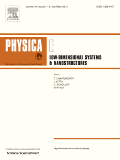
PHYSICA E-LOW-DIMENSIONAL SYSTEMS & NANOSTRUCTURES
Illuminating the pathways of electronic, optical, and magnetic materials.PHYSICA E-LOW-DIMENSIONAL SYSTEMS & NANOSTRUCTURES, published by ELSEVIER, is a premier journal dedicated to advancing the field of condensed matter and nanoscience, focusing on the innovative properties and applications of low-dimensional systems. With an esteemed Q2 ranking in multiple categories including Atomic and Molecular Physics, Condensed Matter Physics, and Nanoscience for 2023, this journal serves as a vital platform for researchers and professionals aiming to disseminate and discuss cutting-edge research. Established in 1974 and converging its focus from 1997 onwards, PHYSICA E captures the evolving landscape of material science, making it a crucial resource for anyone invested in the dynamics of electronic, optical, and magnetic materials. Although the journal operates on a subscription basis, its broad accessibility and significant placement within Scopus rankings—such as being in the 83rd percentile for Condensed Matter Physics—underscore its importance within the academic community. Researchers and students alike will find this journal a cornerstone for fostering knowledge and collaboration in the fields of nanotechnology and low-dimensional physics.
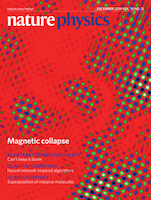
Nature Physics
Elevating Physics Research to New HeightsNature Physics is a premier journal dedicated to publishing high-impact research in the realm of physics, brought to you by the esteemed NATURE PORTFOLIO. With its ISSN 1745-2473 and E-ISSN 1745-2481, this journal has established itself as a vital resource for the physics community, enjoying a remarkable Q1 quartile ranking in the Physics and Astronomy category for 2023 and securing an impressive Rank #5/243 and a 98th percentile ranking in Scopus. Since its inception in 2005, Nature Physics has become a catalyst for innovation, featuring cutting-edge research that encompasses a broad spectrum of physics disciplines. Although it operates under traditional subscription models, it maintains a commitment to accessibility through selective publications and editorial excellence. Positioned in Berlin, Germany, this journal is a must-read for researchers, professionals, and students who seek to stay at the forefront of advancements in physics.

EUROPEAN PHYSICAL JOURNAL B
Bridging Theory and Application in Condensed Matter ScienceEUROPEAN PHYSICAL JOURNAL B (ISSN: 1434-6028, E-ISSN: 1434-6036), published by Springer, is a prominent international journal based in Germany that focuses on the fields of Condensed Matter Physics and Electronic, Optical and Magnetic Materials. With a converged publication timeline from 1998 to 2024, it caters to a diverse audience that includes researchers, professionals, and students striving for the latest advancements in these vital areas of physics. The journal is recognized with a Q3 ranking in both relevant categories for 2023, showcasing its solid yet notable standing within the academic community. Although currently without an H-index, its Scopus rankings reflect a percentile performance of 41st and 39th, respectively, indicating a growing influence among its peers. The journal offers open access options, ensuring that groundbreaking research is widely accessible and contributes to the collective knowledge within the scientific domain. By aiming to publish high-quality, well-researched articles, the EUROPEAN PHYSICAL JOURNAL B plays a crucial role in disseminating innovative findings and fostering collaboration in the field of physics.
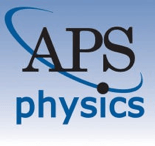
PHYSICAL REVIEW A
Connecting Scholars through Groundbreaking DiscoveriesPHYSICAL REVIEW A, published by the American Physical Society, is a leading journal in the field of Atomic and Molecular Physics and Optics, boasting a Q1 category ranking in its area for 2023. With an ISSN of 2469-9926 and an E-ISSN of 2469-9934, this journal plays a pivotal role in disseminating high-quality research findings, theories, and methodologies that shape current understanding and advancements in the discipline. Although not an open-access journal, it remains highly accessible to professionals and academia through institutional subscriptions. The journal's impactful contributions are evident from its Scopus rank of #70 out of 224 in the field, placing it in the 68th percentile for scholarly impact. As a hub of innovative research and a vital resource for both students and seasoned researchers alike, PHYSICAL REVIEW A remains essential for those seeking to stay abreast of breakthroughs in atomic and molecular studies, as well as optics and photonics.

PHYSICAL REVIEW LETTERS
Elevating Physics Knowledge with Every LetterPhysical Review Letters, published by the American Physical Society, is a premier journal in the field of Physics and Astronomy renowned for its rapid dissemination of high-impact research findings. With a distinguished history dating back to 1958 and an impressive ranking of #13 out of 243 in the general physics category, it stands proudly within the Q1 quartile, placing it in the top 6% of journals in its field. The journal focuses on brief reports of significant fundamental research across all areas of physics, making it an essential resource for researchers, professionals, and students seeking to stay at the forefront of developments in their field. Although Physical Review Letters does not offer open access options, its rigorous peer-review process ensures a high standard of quality and relevance in its published articles. With an unwavering commitment to advancing the understanding of physical science, this journal is indispensable for those looking to make a genuine impact in their research endeavors.
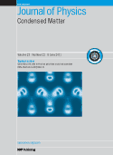
JOURNAL OF PHYSICS-CONDENSED MATTER
Unlocking New Dimensions in Condensed Matter Studies.JOURNAL OF PHYSICS-CONDENSED MATTER, published by IOP Publishing Ltd, stands as a premier platform for the dissemination of impactful research in the fields of condensed matter physics and materials science. Since its inception in 1989, this journal has successfully bridged the gap between fundamental and applied research, delivering cutting-edge findings pertinent to both the academic community and industry professionals. Ranking in the Q2 category for both Condensed Matter Physics and Materials Science, it holds a respectable position within the scientific community, as evidenced by its Scopus rankings. With a commitment to fostering innovative research and promoting open dialogue, the journal offers a substantial collection of articles that contribute to the evolving landscape of materials science and physics. Researchers and students are encouraged to engage with the journal’s rich content, which not only enhances their academic pursuits but also plays a crucial role in advancing technologies based on solid-state materials.

Science China-Physics Mechanics & Astronomy
Empowering Researchers with Cutting-edge InsightsScience China-Physics Mechanics & Astronomy, published by SCIENCE PRESS, stands as a prestigious journal within the Physics and Astronomy domain, particularly recognized for its contributions to the understanding of fundamental and applied physics. With an exhilarating Q1 ranking in the 2023 category and earning a remarkable scopus rank of #21 out of 243, the journal demonstrates its significant impact, being positioned in the 91st percentile of its field. Operating under an Open Access model, it facilitates the broad dissemination of high-quality research, ensuring accessibility for researchers, professionals, and students worldwide. Its scope covers a variety of essential topics in physics and astronomy, promoting a comprehensive understanding of the latest advancements from 2010 through 2024. The journal is a vital resource for anyone aiming to stay at the forefront of research in these dynamic fields, with its prominent address located in Beijing, China, symbolizing its global influence.
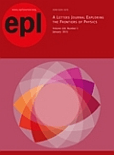
EPL
Shaping Tomorrow's Physics Through Collaborative ResearchEPL, a prominent journal published by IOP Publishing Ltd, stands at the forefront of the field of Physics and Astronomy. With a history of impactful contributions stretching from 1986 to 2024, EPL serves as a dynamic platform for researchers to disseminate their pioneering findings and innovative ideas. The journal, with a current category ranking of Q2 among its peers and a competitive Scopus rank of #101 out of 243 in the general physics and astronomy category, reflects its substantial reputation and contribution to the scientific community. Although it operates under a traditional subscription model, EPL's reach is extensive, enabling access to a diverse readership that includes academicians, industry professionals, and students alike. By fostering interdisciplinary collaboration and promoting rigorous research, EPL continues to play a vital role in shaping the future of physics and astronomy.
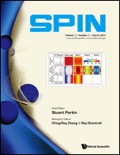
SPIN
Fostering collaboration for a brighter scientific future.SPIN, published by WORLD SCIENTIFIC PUBL CO PTE LTD, is a scholarly journal that serves as a vital resource for researchers, professionals, and students in the fields of Atomic and Molecular Physics, Electrical and Electronic Engineering, and Electronic, Optical, and Magnetic Materials. Established in 2011, this journal offers a platform for innovative research and significant advancements, contributing to the ongoing discourse in its specialized areas until 2024. Although classified under various quartile categories in 2023—Q4 in Atomic and Molecular Physics and Optics, Q3 in Electrical and Electronic Engineering, and Q4 in related Materials Science—the journal continues to strive for the highest scholarly standards and relevance. With Scopus rankings indicating its potential for growth, SPIN aims to foster knowledge dissemination and collaborative science addressing pivotal technological challenges. Located in Singapore, the journal also encourages submissions that showcase interdisciplinary approaches, thereby enhancing the global scientific community's understanding of current trends and future directions in these dynamic fields.
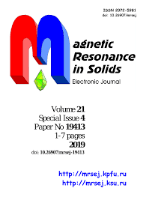
Magnetic Resonance in Solids
Empowering Scientists with Cutting-Edge FindingsMagnetic Resonance in Solids is a pioneering open-access journal, published by Kazan Federal University in the Russian Federation since 2006. With an ISSN of 2072-5981, this journal focuses on a diverse array of disciplines within Atomic and Molecular Physics, Electronic, Optical and Magnetic Materials, Nuclear and High Energy Physics, and Spectroscopy. Although its impact factor currently places it in the fourth quartile across multiple categories, the journal provides invaluable insights into the evolving field of magnetic resonance, informing researchers and professionals alike. It features a wide range of original research articles, review papers, and technical notes that foster the exchange of knowledge in solid materials characterization through magnetic resonance techniques. Despite facing competitive rankings, its open-access nature ensures broad dissemination of critical findings, appealing to a global audience of scientists, academics, and students seeking to advance their understanding of solid-state phenomena. The journal is continuously committed to promoting high-quality research and fostering innovation in its areas of study.